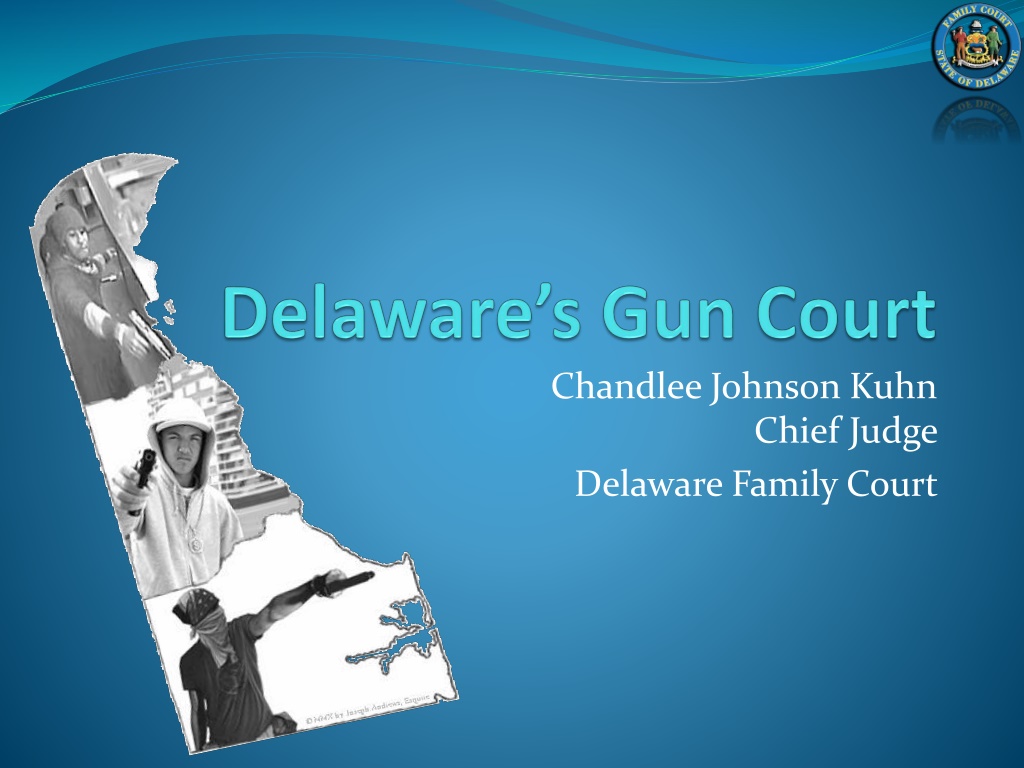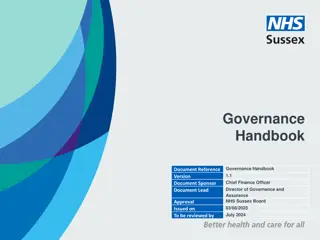Renewable Energy Benefits & Opportunities in Sussex County
Discover the history of CMI Solar & Electric and how they have been a pioneer in solar technology since 1998. Learn about the efforts to lower costs of residential solar installations and explore the state and federal incentives available for renewable energy projects in Delaware. Find out more about the Delaware SREC Procurement Program and how to grow solar initiatives in Sussex County and beyond.
Download Presentation

Please find below an Image/Link to download the presentation.
The content on the website is provided AS IS for your information and personal use only. It may not be sold, licensed, or shared on other websites without obtaining consent from the author.If you encounter any issues during the download, it is possible that the publisher has removed the file from their server.
You are allowed to download the files provided on this website for personal or commercial use, subject to the condition that they are used lawfully. All files are the property of their respective owners.
The content on the website is provided AS IS for your information and personal use only. It may not be sold, licensed, or shared on other websites without obtaining consent from the author.
E N D
Presentation Transcript
Chandlee Johnson Kuhn Chief Judge Delaware Family Court
Every single day in the United States, guns cause the death of 20 children and young adults. Children and young adults constitute over 41% of all firearm deaths and non-fatal injuries. Gun Violence Statistics, Legal Community Against Violence http://www.lcav.org/statistics-polling/gun_violence_statistics.asp#9.
The Need Juvenile street gun culture trend 20% of all perpetrators of Wilmington gun crime in 2008 were juveniles between the ages of 14 and 16 System complications: Dual jurisdiction of Family Court & Superior Court Crowded court calendars Multiple case delays No communications between various State agencies Inadequate data tracking & information sharing Political bickering
The Solution Establish a Gun Court 2009 Part of Family Court Exclusively for juveniles GOAL: To break the repeating cycle of juvenile gun crime & rehabilitate DE s youth as quickly & effectively as possible within Constitutional Rights.
Methodology Delaware is looking at each individual juvenile and assessing their unique individual circumstances Emphasizing treatment and education over punishment and alienation has led to a low recidivism rate and judicial and economical efficiency. The collaboration among the Court, Prosecutor s Office, Defense Counsel and the Division of Youth Rehabilitative Services has made this program successful in Delaware.
The Reasoning Addressing gun violence in juvenile court promotes community safety and rehabilitation Single, streamlined forum to address gun violence Sentences include appropriate treatment, rehabilitation efforts & close court supervision Consistent data tracking for effective resource allocation
The Upside By keeping juveniles incarcerated, more of them are completing high school & receiving their GEDs, when they previously never did.
The Downside Taking a risk with these youths in terms of giving them another chance after committing very serious offenses Gun Court calendar will eventually be overloaded with non-gun cases since once in Gun Court, juvenile comes back for all subsequent charges.
Dwayne Betts What is the value of a life?
Success Story New Castle County: E. G. Came in with very serious robbery gun charges Went to Project Stay-Free Committed a VOP by failing to check in First 90 days no change Today (6 months later): a New man. Packed the Courtroom with supporters Thankful for the second chance
Statistics One year after inception, Delaware s Gun Court decreased the number of juvenile gun cases heard in Superior Court by 44%. Drastically reduced case disposition time Nearly 90% of cases plead. Reduced expenses: 61% of the space at DE s juvenile detention centers was occupied by gun crime defendants in 2008. In 2009 Gun Court reduced this to 17%. As of January 2012, out of the 230 juveniles who had come through Gun Court, 35 had new gun charges. 15% recidivism rate
Total Violent Felonies by County 2011 2009 Kent NCC Sussex NCC Kent Sussex 12% 11% 14% 54% 34% 75% 2010 NCC Kent Sussex 13% 22% 65%
Violent Felony Recidivism Rate NCC NCC NCC Kent Kent Kent Sussex Sussex Sussex Total Total Total 2009 2010 2011 Gun Court Total Gun Court Total Gun Court Total
Average Recidivism Rate 09-11 Average 1.5 1 0.5 0 Total Family Court Non-Amenable Original Jurisdiction
The Process: Charges Superior Court First and Second-Degree Murder First and Second-Degree Unlawful Sexual Intercourse First Degree Assault First Degree Kidnapping First Degree Robbery IF Previously adjudicated delinquent of 1 or more offenses which would constitute a felony AND Involves a deadly weapon OR involves the threat of possessing a deadly weapon OR involves the infliction of serious physical injury on the victim
The Process: Charges Superior Court If Defendant is 16 or older AND has previously been found delinquent of a felony AND the current charge is First-Degree Conspiracy First-Degree Arson First-Degree Burglary An attempt of any of these charges
The Process: Charges Gun Court An amenability hearing will be held if: Juvenile is 16 or older Charged with Manslaughter First-Degree Burglary Arson Second-Degree Rape An attempt of any of these charges Otherwise, Gun Court has Jurisdiction
The Process: Charges Typical Gun Court Charges Carrying a Concealed Deadly Weapon Possession of a Firearm During the Commission of a Felony Reckless Endangering Aggravated Menacing Theft of a Firearm Possession of a Weapon in a Safe Zone
The Process: Amenability Defendant Makes decision about Amenability Final Decision Can Accept or ask for hearing Attorney General s Office Judge
The Process: Amenability Judge will incorporate the opinions of the: Psycho- Forensic Evaluator Public Defender YRS Prosecutor Defendant
The Process: Amenability Judge will incorporate the following factors
The Process: Prelim Gun Court Judge hears Preliminary Hearings for all cases in Gun Court, even those which will be transferred to Superior Court.
The Process: Case Review Prior to going to trial, a case review is scheduled. Includes Prosecutor, Defense Attorney, Defendant, and Gun Court Judge. Case Review If rejected, case goes to trial in front of different Family Court Judge. Prosecutor may not follow the case, but the Public Defender may. Plea Offer
The Process: Sentencing Judge has discretion over where to place defendant. Incorporates opinions of: Psycho- Forensic Evaluator Public Defender YRS Prosecutor Defendant
The Process: Sentencing Factors that should be considered in placement decision:
The Process: Placements Grace Cottage Glen Mills (Pennsylvania) Coastal Harbor (Georgia) Project Stay-Free Ferris South Dakota & Southwest Indiana (Girls)
The Process: Sentence Reviews Held periodically in front of Gun Court Judge On phone or in person Department of Services for Children, Youth, and their Families conducts probation reviews and status updates Treatment Facility Probation Officer Gun Court Judge Sentence Review
The Process: The End Juvenile completes sentence, gun court jurisdiction ends. Arrest New Charges Plea BUT, subsequent charges will bring the defendant back to Gun Court, whether or not the new charges involve a weapon. Completion Sentence
Roles: Judge Gun Court Judge presides over: Amenability Hearings Preliminary Hearings Pleas & Sentencing Bail Reviews Arraignments Case Reviews
Roles: Judge Has the choice to: Waive Jurisdiction Find Non-Amenable Accept Plea Set a Date for Trial Continue
Roles: Prosecution Evaluates, based on the nature of the crimes, whether jurisdiction lies in Superior Court or Family Court. Statutory mainly, but will also look at factors: Defendant s Age Prior Record Seriousness of Offense Any Family Court Benefit D s Prior Placement History
Roles: Prosecution Prior to Trial: Defendant s Age Prior Record Accumulates as much information as possible Talks with Defense Attorney, Child Services and Support Services Seriousness of Offense Any Family Court Benefit Gets to hear mitigating factors D s Prior Placement History
Roles: Prosecution Goal:
Roles: Defense Meet with Defendant, PFE, Family Goal: Keep the case in Gun Court, and out of the Superior Court.
Roles: Defense To keep the case in Gun Court, argue mitigating factors. Defendant Support Services If staying in Gun Court, conduct discovery after preliminary hearing. YRS Family Members
Roles: Youth Rehabilitative Services Prior to hearing, probation officers attempt to reach out to defendant s on Gun Court Calendar. Explain their role in Gun Court. Try to collect records: Home Behavior Substance Abuse Mental Health School Records
Roles: Youth Rehabilitative Services Reach out to pre-trial programs Coordinate with other divisions Learn Min. Mandatory Meet with family and defendant Recommend to Court
Roles: Support Services Delaware Public Defender s Office established the first Psycho-Forensic Evaluator (PFE) Unit of any PDO in 1980. Masters-level PFEs assist attorneys Client History Develop Client Specific Plan Assist Attorneys Provide Mitigating Factors at Sentencing Medical Mental- Health Substance Abuse In hiring Experts Defenses Alternatives to Level 5 For Conditiona l Pre- Release
Roles: Support Services PFEs try to get the complete picture of the defendant. Contact all parties in defendant s life Assist Attorneys
Future Goals Lower recidivism rates. Provide more juvenile s with access to education/ GED programs. Help juveniles become employed or employable upon completion of rehabilitative treatment. Gain a better understanding of the reasons for youth gun crimes.
Conclusion Gun Court is still a work in progress, but we have seen positive results thus far and we continue to adapt to better serve the citizens of Delaware.























